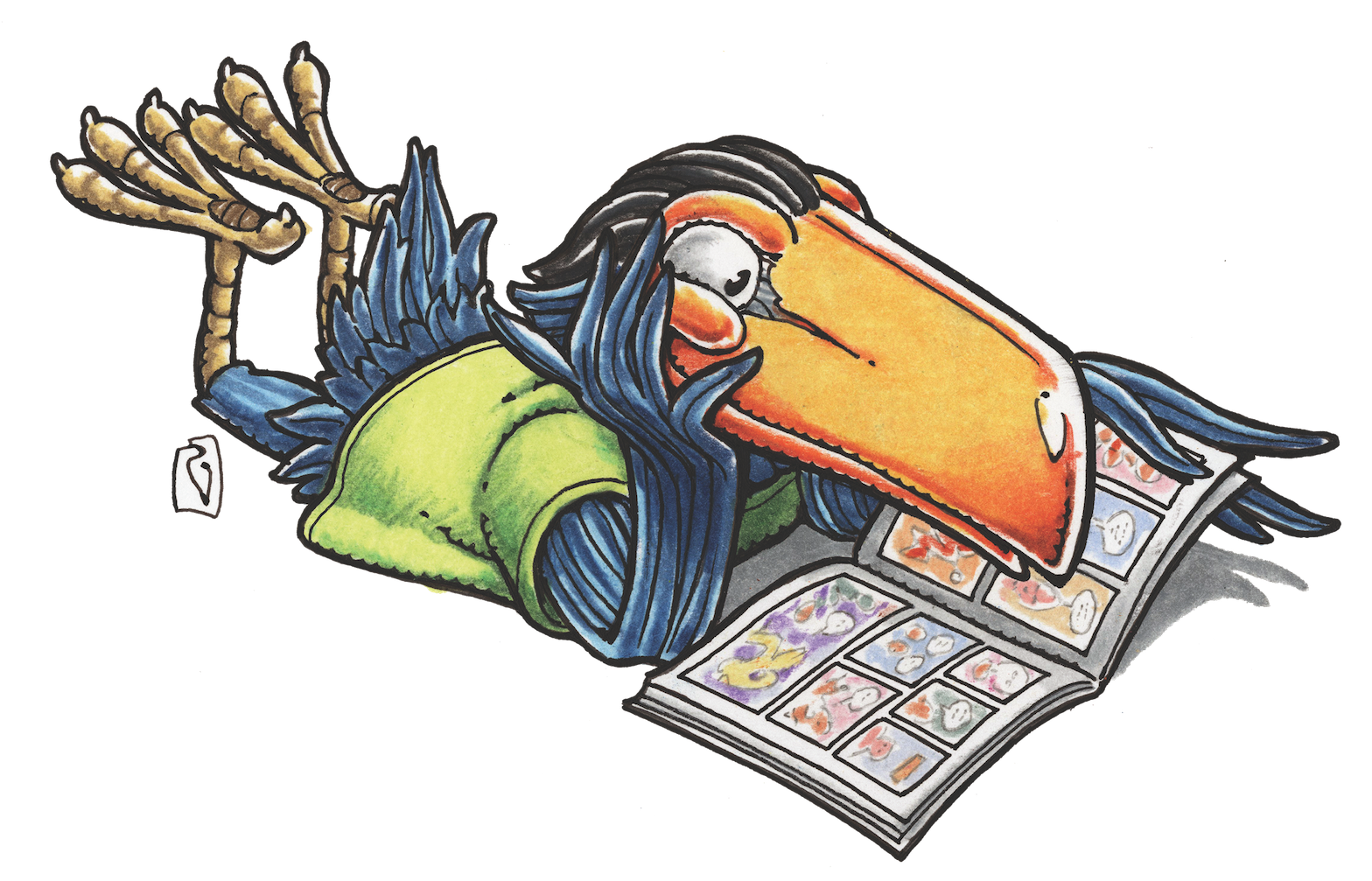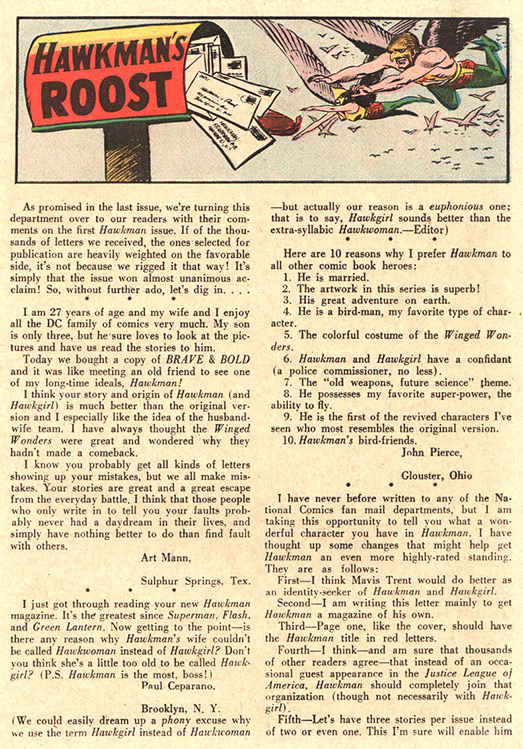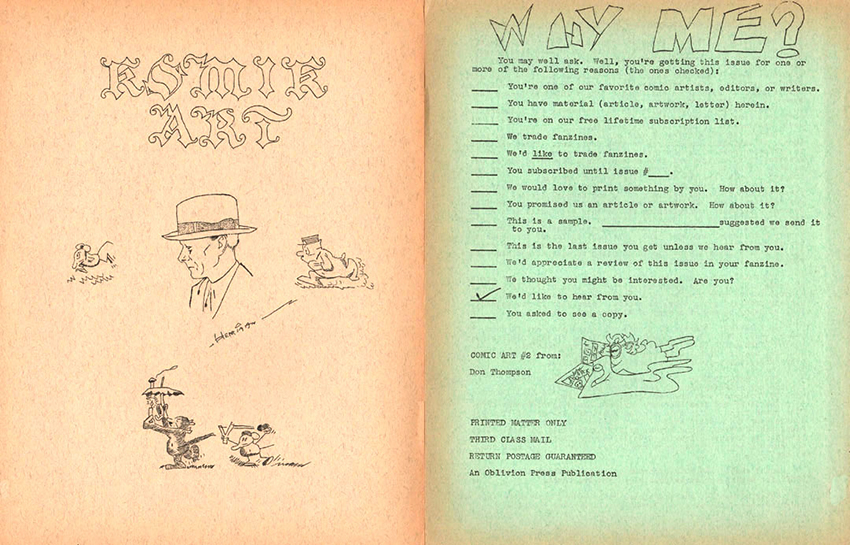MAGGIE’S WORLD BY MAGGIE THOMPSON
Maggie’s World 039: 2016 Fanniversary 55


Last year in September, I celebrated the 55th anniversary of the sparks that were soon to ignite the tinder of my involvement in the world of comics fandom. Don and I had attended the World Science Fiction Convention in Pittsburgh at which we decided to publish our own amateur magazine about comics. Because it was clearly Comic Book Time.
So it was that, in the spring of 1961, a number of different comic-book lovers began to reach out to each other. The tinder was ablaze for many of us, as we asked and answered questions about comics: comics series, comics stories, comics history, and comics creators. That metaphoric fire was fueled by the customs and inhabitants of an existing universe of fans.
Science Fiction Fans
Decades earlier, radio and television pioneer Hugo Gernsback had created magazines focusing on electronics and radio and founded the Wireless Association of America, an early club for people who shared that hobby. In his magazines, he ran both science news and science fiction. 90 years ago, he released the first issue of the first magazine entirely devoted to science fiction—and he ran a letters column in which he printed the addresses of the letters writers.
Within a couple of years, that magazine—Amazing Stories—accumulated a number of authors and correspondents who were collectively attracted by science fiction, and it even ran the story that introduced Buck Rogers. Creators who were captivated by the possibilities of the fiction got to know each other. Such people as Jerry Siegel, Joe Shuster, Ed Hamilton, Leigh Brackett, Otto Binder, Ray Palmer, Mort Weisinger, and Julius Schwartz were able to get in contact. Even fans whose stories weren’t published in professional newsstand magazines became publishers themselves, producing and sharing amateur magazines they called “fanzines.”
In some cities, fans and pros were able to meet and hang out together—but even readers and writers in small towns formed a network of people who shared an interest in SF. A few of those eventually found work in a new art form: comic books. As a result, some of the traditions of SF fandom were introduced to comic books, and dealers in back-issue SF magazines began to include back-issue comic books in their stock. Now and then, SF fans discussed comics; my mother wrote about the art form in the fanzine Dad and she produced in June 1949, as I mentioned in my first Maggie’s World installment.
[There were a few efforts before 1961 that did not grow into an enduring, evolving world of comics fans. As far back as 1936, one of the SF fans, Dave Kyle, published Fantasy World, a fanzine that included comics content. In the 1950s, some E.C. fans published fanzines and contacted each other—but E.C.’s letters columns didn’t print addresses.]

In any case, given his background, it was a natural tactic for DC editor Julius Schwartz to try to build reader enthusiasm for the reboot of Hawkman in the character’s tryout stories in The Brave and the Bold. In #35 (dated April 1961, on newsstands earlier that year), Schwartz announced he’d sent advance proofs of the Hawkman story in #34 “to a select group of readers who have favored us with fine critical letters in the past.” And Schwartz ran letters of reaction from Jerry Bails, Ron Haydock, Roy Thomas, and Ronnie Graham. As Gernsback had done decades before, he included the addresses of those writers.
In a different fannish evolution, I had grown up in the world of science fiction pros and fans by the time I met fan Don Thompson at a picnic at the home of SF writer Basil Wells. We spent the day sharing comments about a wide variety of pop culture—a term that had yet to be coined—and our topics included comics.
He was already involved in fanzine publishing at Penn State, and I was getting SF fanzines from a number of publishers. The concept of a far-flung community of fans was old hat by the time we saw Dick and Pat Lupoff dressed as Captain and Mary Marvel at the 1960 World Science Fiction Convention in Pittsburgh. It was at the banquet at that convention that we decided we’d make our own fanzine devoted to finding out all we could about the people who wrote, drew, and edited comic books, comic strips, magazine cartoons, animated cartoons, and the like. Hey, maybe we could even figure out what those weird numberings on some Dell comics were all about!

Jerry Bails and Roy Thomas
With no connection to Don and me (but with major support from Julius Schwartz), Jerry and Roy kicked off their publication of Alter-Ego, which soon lost the hyphen (and even, eventually, the two of them). Their emphasis was on costumed heroics; if the character had a mask or a cape, that character was on their radar. And they, too, mailed their first issue in the spring of 1961.
Comics fans began to reach out to each other. That autumn, a title focusing on an odd super-team was introduced by another comic-book company. By the following spring, Fantastic Four (#3) also had a letters page—and a cover appeal to consider the issue a collectors’ item.
And Then …
There was so much to explore, so many facts to learn, so many questions to ask, so much to tell!

By Alter-Ego #4 (Fall 1962, print run 1,000), publisher-editor Jerry Bails announced his departure from that magazine (passing it on to Ronn Foss). “I’ve got dozens of other fannish projects that I need time to work on.” Those included reading comics from the 1940s, filling items on his want list, photographing the covers of first issues of all comics published before 1948, publishing The Comic Reader, finding data on artists, writers, and all costumed-hero comics before 1948, producing an index to DC titles, and contributing to other fanzines.
That fourth issue also announced the winners of the first annual fan awards for comic books. And plugged what Jerry termed “its imitators”: The Comic Fan, Comic Heroes Revisited, Comic Heroes Unlimited, The Comic World, The Comix, Fan to Fan, Headline, Komix Illustrated, Masquerader, Spotlite, and Super-Hero.
Jerry went on to initiate project after project in his hobby: a comics amateur publishing association; a who’s who of creators; a microfilm project to preserve the content of rare comics; and even a price guide with Bob Overstreet—because the prices had finally stabilized, in 1971, a decade after Alter-Ego #1. (Action Comics #1 [which had introduced Superman 33 years earlier] was priced at a stable $300 in Mint condition, and Amazing Fantasy #15 [less than a decade after it had introduced Spider-Man, after all] was $16.)
Roy’s comics interests led to a professional career in the field. He wrote and edited his own comics. (He even, decades later, returned to creating material focused on comics history and the art form. But that’s getting ahead of the story.)
With the message boards provided by newsstand comic books, word of fan activities quickly spread. On the afternoon of July 27, 1964, Bernie Bubnis provided a venue for fans and pros to gather in New York City. In 1966, John Benson put together a multi-day event in New York, complete with film showings in those days before everyone could assemble their own collections of comics-connected films—and there were other multi-day events around the country. That autumn, Jerry Bails began the first comics amateur publishing association, CAPA-alpha (its magazine titled K-a).
And so the population of the world of comics fans grew.
And Now
Over the years, I’ve dealt with a variety of collecting hobbies, and I must say that comics fans are among the most literate hobby collectors. After all, they read for pleasure and often write and draw for the same reason.
It’s so much easier to do that today than it was 55 years ago—although the concept of one focal point, one central spot that everyone uses, has evolved into a splintered environment. Comics have so many aspects that the experts, fans, pros, and scholars are too many to count.
Heck, the same goes for the comic books themselves. Comic strips began as a way to distract from grim news of the day. Comic books began as a way to keep printing presses busy with cheap products.
Comic art—and its fans—surpassed those goals long ago and have now known around the world. Who’d have thought it?
Maggie’s World by Maggie Thompson will return to its regular first Tuesday of the month schedule in May, here on Toucan!